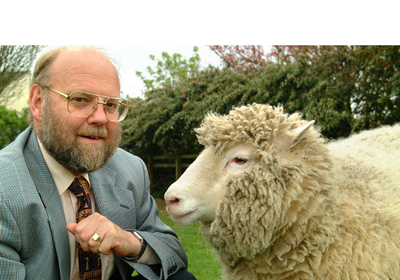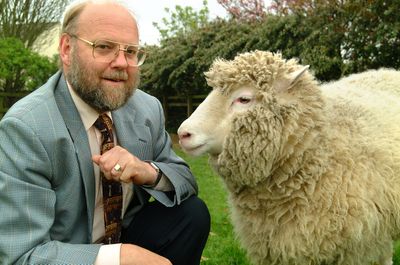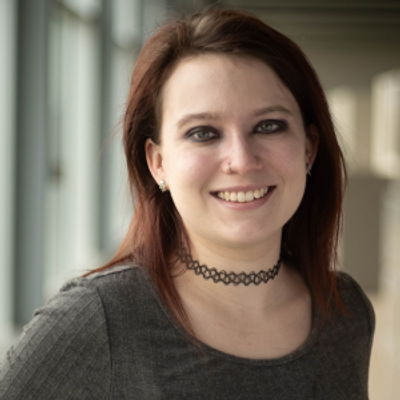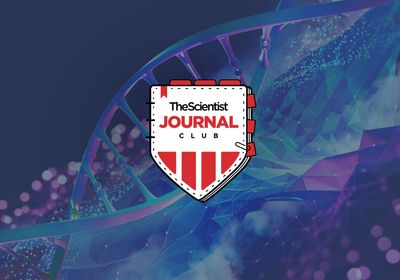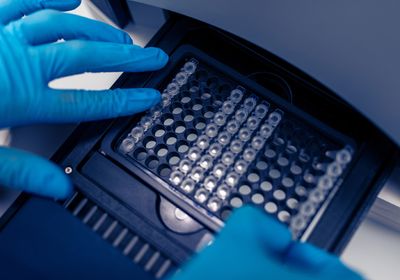ABOVE: Sir Ian Wilmut kneels beside Dolly the sheep, the first animal cloned from an adult cell. Roslin Institute, University of Edinburgh
Ian Wilmut, the embryologist most known for cloning Dolly the sheep, passed away at age 79 from complications of Parkinson’s Disease, according to news from the University of Edinburgh. Wilmut’s work represented a milestone in the field of regenerative medicine and stem cell research.
Born to teachers in a Warwickshire village in 1944, Wilmut was originally interested in agriculture but later switched to animal science studies at the University of Nottingham. After a summer job with biologist Christopher Polge at the University of Cambridge, Wilmut became fascinated with cryopreservation. He pursued a doctoral degree studying freezing techniques for animal semen and embryos with Polge. Wilmut and Polge applied the knowledge they gained to help the first live birth from a frozen embryo: a calf named Frostie.
In 1973, Wilmut joined the Animal Breeding Research Organization , which would later become the Roslin Institute. He initially worked on genetically modifying sheep to produce milk that contained therapeutic proteins. This led him to search for a more efficient method of sheep breeding using a nuclear transfer method, or animal cloning.
See also “Study: Cloned Sheep Age Normally”
He worked alongside cell biologist Keith Campbell , who observed that one critical step in cloning was synchronizing the cell cycles in the donor and recipient cells. Soon, Wilmut’s team created the first successful sheep clones in 1995 using nucleic material from cultured embryonic cells: Megan and Morag.1 The following year, by building further upon their previous technology, he and his team introduced the nucleus from the cell of an adult mammary gland into an adult egg cell, and the famous Dolly was born.2 The achievement made headlines as it was the first time a mammalian clone was generated using adult tissue.
Despite sensationalized media and political messaging, Wilmut’s ambitions were never for human cloning. Instead, he planned to develop models and therapies to treat disabilities and regenerative diseases. Wilmut’s success with Dolly and the subsequent clone Polly showed that committed cells could be reprogrammed to a less differentiated state, opening the door for stem cell research.3 A decade after Dolly, researchers in Japan led by Shinya Yamanaka developed a protocol for producing induced pluripotent stem cells (iPSCs) from mouse embryonic and adult fibroblasts.4 Today, these technologies are being explored to aid regenerative medical therapies.
See also “Dolly’s Cloning Likely Didn’t Cause Premature Aging”
In 2005, Wilmut moved to the University of Edinburgh, where he was named the director of the newly established MRC Center for Regenerative Medicine. In 2008, he led a project studying the genetic causes of motor neuron diseases that relied on Yamanaka’s iPSC protocol. That same year, he was knighted for his exceptional contributions to science.
Wilmut retired from the University of Edinburgh in 2012. In 2018, he and researchers from the University of Dundee launched the Dundee-Edinburgh Initiative to study Parkinson’s Disease and run clinical trials. Wilmut revealed that he had Parkinson’s Disease with the announcement of the initiative. Wilmut is survived by his wife, three children, and five grandchildren.
References
- Campbell, KHS, et al. Sheep cloned by nuclear transfer from a cultured cell line. Nature. 1996;380:64-66
- Wilmut, I, et al. Viable offspring derived from fetal and adult mammalian cells. Nature. 1997;385:810-813
- McCreath, KJ, et al. Production of gene targeted sheep by nuclear transfer from cultured somatic cells. Nature. 2000;405:1066-1069
- Takahashi K. & Yamanaka S. Induction of Pluripotent Stem Cells from Mouse Embryonic and Adult Fibroblast Cultures by Defined Factors. Cell. 2006;126(4):663-676
